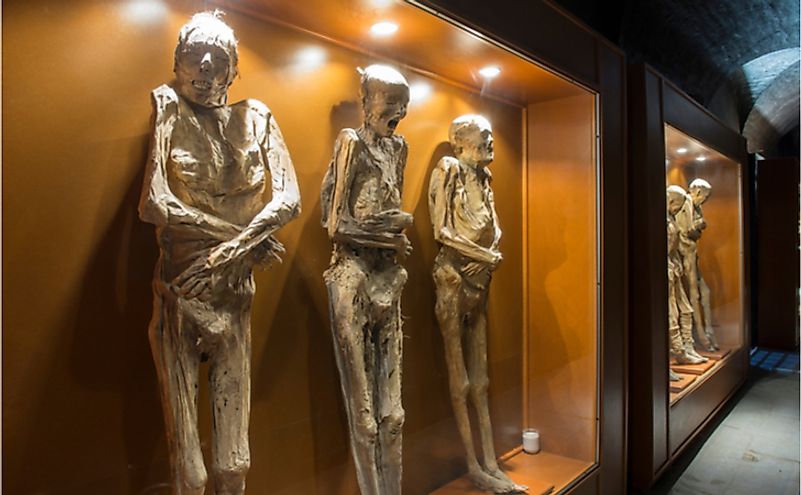Where Is The Unique Mummy Museum?

The Mummy Museum in Guanajuato, Mexico, is an extraordinary attraction that features naturally formed mummies that are over a hundred years old. The museum has at least 4,000 visitors every week who flock to view over a hundred mummified bodies from a nearby cemetery. Inside the museum, the mummies are displayed in glass cabinets. Tourists visiting the museum are typically given fair warning due to its graphic content.
What Is Natural Mummification?
Most of the bodies in the museum are associated with the cholera outbreak that spread through the area in 1833. The natural mummification process was most likely as a result of the dry climate prevalent in the region coupled with the storage of bodies in airtight crypts that slowed the decomposition. The difference between mummies recovered from airtight tombs and those disinterred from the earth is quite remarkable. Those obtained from airtight tombs appear to be better preserved. Many of the mummies wear the clothes that they had during burial while those undressed show yellow skin, gaping mouths, and shriveled eyeballs.
Origin Of The Mummies
During the cholera epidemic, most of the corpses were buried immediately as a means to control the disease. Some of the mummies are seen to have horrific expressions that some experts believe belonged to people who were accidentally buried alive. Several experts, however, believe that postmortem procedures caused such facial expressions. Many of the corpses were exhumed between the years 1865 and 1958. At the time, a tax was introduced for bodies laid in the cemetery. Relatives were required to fulfill the tax obligation to have their loved ones interred for a specified period. Corpses belonging to relatives who were unable to remit the tax were disinterred to leave room for new bodies. Some of the corpses recovered were found to have naturally mummified and were subsequently placed in a nearby building. The mummies soon began to attract tourists who paid a small fee to the cemetery workers to view them. The building was later converted into a government-run museum.
Identities Of The Museum's Mummies
The mummy of Remigio Leroy, a French doctor, was the first in the museum. Owners of the mummy were astounded by the near-perfect preservation of his body. The building also holds the mummy of a pregnant woman who died as a result of cholera. A four-month fetus, widely considered as the smallest mummy ever discovered, is visible through magnification. The museum also has a mummy of an infant called Baby Enrico who died aged six months in 1999. The body was added to the museum’s collection after the expiry of his crypt lease. The mummy is currently dressed in the likeness of Saint Bartholomew. Five other infant mummies are on display under controlled conditions. The mummy of "Little Saint Martin" was dressed as a saint with a rosary and a broom by his parents who hoped that the outfit would allow easy passage to the afterlife.
Cultural Links To The Museum's Establishment
Despite what some might describe as horrifying experiences, the museum ranks as one of the best in Mexico. The museum has been defended by government officials who point out that it is an integral part of the town's appeal. Death of loved ones is considered inevitable in the Mexican culture. People, therefore, embrace and celebrate death.











